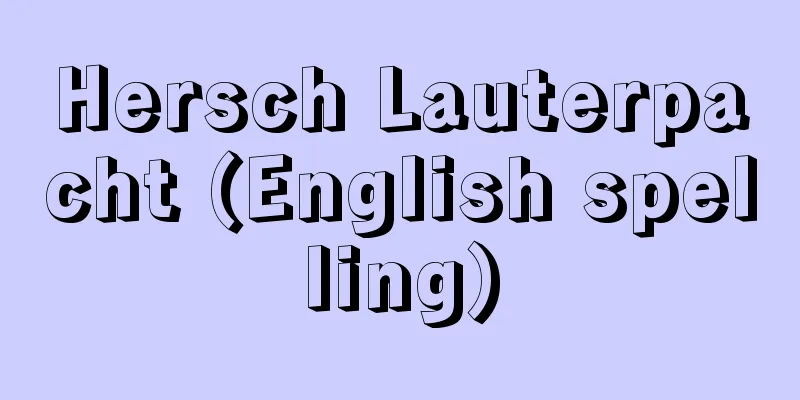Pile - Kui (English spelling)

|
A columnar underground structure installed to transfer the load of a structure to the supporting ground. Usually, the load from the superstructure is transferred to the pile head, and is supported by the ground from around the pile or from the tip of the pile. In addition to being used as a foundation pile, they are used for various purposes, and are called various names such as earth retaining piles, restraining piles, and shock-proof piles depending on the purpose of use. In recent years, advances in construction technology have made it possible to construct large diameter, long piles, and large cross-section piles with diameters of several meters or more are also being constructed. They are broadly classified into bearing piles and friction piles according to the load-bearing mechanism. Bearing piles are those whose tip is embedded in a good quality stratum with sufficient bearing capacity. In contrast, those whose tip does not reach a good quality bearing layer and mainly support the load by the frictional resistance between the pile and the surrounding soil are called friction piles. Also, piles that can be treated as soft elastic materials against horizontal loads in terms of design are called piles, while those that behave like rigid bodies are classified as caissons. Therefore, when it comes to large diameter piles, they may be classified as piles in terms of design, even though they are constructed using the same construction method as caissons. When classified according to the material that constitutes the pile body or the construction method, they are broadly classified into precast piles and cast-in-place piles, and precast piles are further divided into driven piles and buried piles. [Akira Kono, Hitoshi Shimizu, and Takashi Shigitani] Prefabricated pilesConcrete piles include reinforced concrete piles, prestressed concrete piles, high-strength prestressed concrete piles, and steel pipe concrete composite piles, which are intermediate between concrete piles and steel piles. The cross-sectional shape of all piles is generally circular and hollow. Steel piles are broadly divided into steel pipe piles with a pipe-like shape and H-shaped piles with an H-shaped cross section, but steel pipe piles are more commonly used in Japan. In order to prevent damage to piles due to the downward friction (negative friction) that acts on the piles as the ground subsides, piles with a special asphalt surface treatment are also manufactured. There are two methods for driving the piles: driving them in by impact or vibration, and embedding the piles by drilling holes in the ground and inserting them. [Akira Kono, Hitoshi Shimizu, and Takashi Shigitani] Cast-in-place pilesA plain, reinforced, or steel-framed concrete pile is constructed by drilling a hole in the ground beforehand and pouring in-situ concrete into the hole. The first cast-in-place piles were percussion-type cast-in-place piles such as pedestal piles, which were introduced from the end of the Meiji period to the Taisho period, and were used for over 30 years. Since the 1950s, various types of machine-drilled large-diameter cast-in-place pile construction methods have been introduced and developed one after another, and have undergone rapid development to the present day. The manual excavation-type deep foundation method, which has been used since around 1930 (Showa 5), has the advantage of not requiring special equipment or machinery and allowing construction while directly checking the excavated ground, and is still widely used depending on the conditions. [Akira Kono, Hitoshi Shimizu, and Takashi Shigitani] [Reference item] |©Shogakukan "> Bearing piles and friction piles ©Shogakukan "> Cast-in-place pile construction sequence (reinforced concrete… Source: Shogakukan Encyclopedia Nipponica About Encyclopedia Nipponica Information | Legend |
|
構造物の荷重を支持地盤に伝えるために設置する柱状の地中構造体。通常、上部構造からの荷重は杭頭に伝達され、杭周辺あるいは杭先端部から地盤に支持される。基礎杭のほか各種用途に利用され、使用目的により土止め杭、抑止杭、防衝杭など種々の呼称がある。近年、施工技術の進歩に伴い大径、長尺杭の施工が可能となり、直径数メートル以上の大断面の杭も施工されている。 荷重の支持機構により支持杭と摩擦杭とに大別される。支持杭は、杭先端部が十分な支持力のある良質な地層に根入れされているものをいう。これに対して杭先端が良質な支持層に達せず、主として杭とその周辺の土との摩擦抵抗力によって荷重を支えるものを摩擦杭という。また、水平荷重に対して設計上柔らかな弾性材として扱えるものを杭といい、剛体に近い挙動を示すものはケーソンcaissonとして区分される。したがって、大径杭になると、施工はケーソンと同様な工法をとりながら、設計上は杭として分類されることもある。杭本体を構成する材料あるいは施工法により分類すると、既製杭と場所打ち杭とに大別され、さらに既製杭は打込み杭と埋込み杭とに分けられる。 [河野 彰・清水 仁・鴫谷 孝] 既製杭コンクリート杭には、鉄筋コンクリート杭、プレストレストコンクリート杭、高強度プレストレストコンクリート杭、およびコンクリート杭と鋼杭の中間的なものとしての鋼管コンクリート合成杭などがある。断面形状はいずれも円形中空が一般的である。鋼杭はパイプ状の鋼管杭とH形断面のH杭とに大別されるが、日本では鋼管杭が多用される。地盤沈下に伴い杭に作用する下向きの摩擦力(ネガティブフリクションnegative friction)による杭の破損を防止するために、特殊なアスファルト表面処理を施した杭も製作されている。打設方法には、打撃または振動により打ち込む方法と、地盤に穿孔(せんこう)して挿入するなどの方法により杭を埋設する埋込み杭工法とがある。 [河野 彰・清水 仁・鴫谷 孝] 場所打ち杭あらかじめ地盤中に孔(あな)を掘削し、その孔の中に現場打ちコンクリートを打ち込み築造する無筋、鉄筋あるいは鉄骨コンクリート杭。場所打ち杭の初期のものとして、明治末期から大正期にかけてペデスタルpedestal杭などの打撃貫入式の場所打ち杭が導入され、その後30余年にわたって使用された。1950年代以降、各種の機械掘削式大口径場所打ち杭工法が相次いで導入、開発され、急速な発展を遂げ今日に至った。1930年(昭和5)ごろから用いられてきた人力掘削式の深礎工法は、特殊な設備や機械を必要とせず、掘削地盤を直接確認しながら施工できるなどの利点があり、いまなお条件に応じ広く使用されている。 [河野 彰・清水 仁・鴫谷 孝] [参照項目] |©Shogakukan"> 支持杭と摩擦杭 ©Shogakukan"> 場所打ち杭の施工順序(鉄筋コンクリート… 出典 小学館 日本大百科全書(ニッポニカ)日本大百科全書(ニッポニカ)について 情報 | 凡例 |
Recommend
All Romance Incident
...In 1951, the All Japan Buraku Liberation Counc...
Vase - Kabin
〘Noun〙 (old also called "kahin") A type ...
pogo
...Holding the handles with both hands and balanc...
Tricyrtis imeldae (English spelling)
…[Hiroshi Takahashi]. … *Some of the terminology ...
Amniotic membrane - Good
The amnion is the embryonic membrane that directl...
Principal - Ganpon
Assets that generate revenue. Generally refers to ...
Ogier, E. - Ogier
…In French, pièce bien faite literally means a we...
Uracil
...In DNA, the sugar moiety is 2-deoxy-D-ribose, ...
Chuji Aoi
1904-1975 A businessman from the Showa era. Born ...
Somateria fischeri (English spelling)
… [Yanagisawa Norio]. … *Some of the terminology ...
Wenseki - Wenseki
...Boundary marking devices similar to shimenawa ...
Center of curvature
The center of a circle of curvature. Source: The S...
Solidification
(1) The change of a substance from a liquid or ga...
angel's-trumpet
...Compared to the two species mentioned above, t...
Ʃp-adic number - p-adic number
It was invented by K. Hensel (1861-1941) in the ea...









